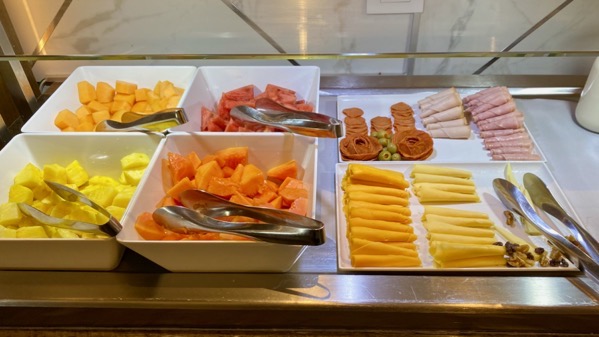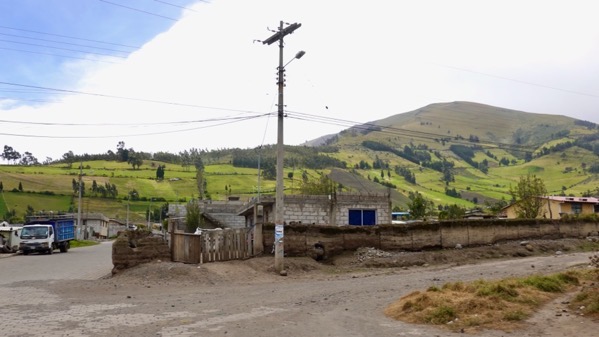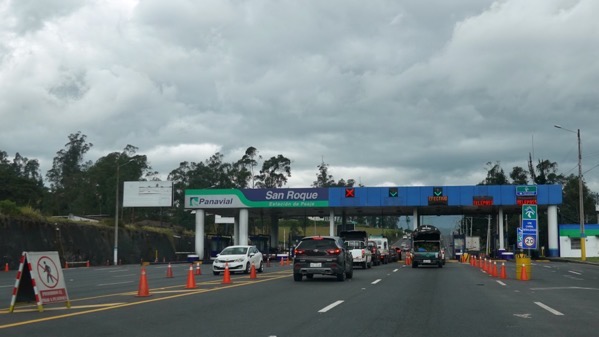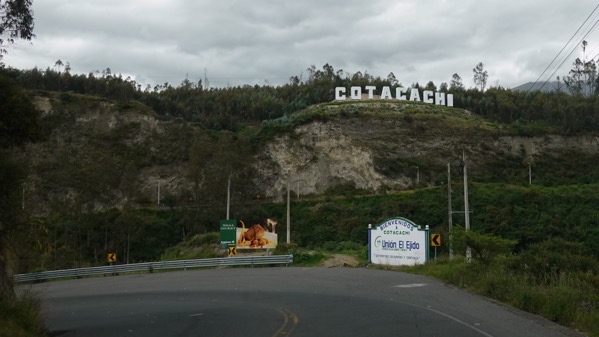
A hot breakfast comes with our room near the Quito airport. Nice, but not the quality that Alejandro and Washington produce on the Grace. Or I’m sure the other chefs that work there when they are off. Interesting sausage-slice “flowers.”

John went and got our rental car, not as straightforward as you’d think, but not too terrible. We set off northward, toward and to Ibarra. Row crops and fallow fields mosaic.

Crossing Río Guachalá.
These photos are not terribly good. Please look beyond reflections, dirty windows, and distracting power lines to absorb what they capture about the Andes and the people living there now.

Note the adobe wall separating this lot from the street/ditch. Much of our first leg was away from the normal long-distance traffic, and rural life was more apparent. Commercial activities are focused along the main roads. Along with many busy buses.

While most areas have straight-walled domiciles, this is one of two areas where we noticed these overhanging second stories, sometimes with an ambitious additional overhanging third story.

Green. Lush. On Galápagos, we heard it was the dry season. Doesn’t seem the same here. Of course, the mountains making the clouds rise will bring rain.

Only really old vehicle I’ve spotted. Many dating back to the 1970s, however.

Urbanization. Ibarra.

Scattered toll plazas, not particularly frequently. Always one dollar.

Scrappy neighborhood with scrappy roads. Think about what happens after a good rain. And many people navigate these streets on foot, like this tiny elderly woman on the right.

Many towns have large artsy signs, sometimes with a statuary. This is the only one that we saw riffing on the Hollywood sign.

If this were Mexico, I’d call this a zocaló in front of the Palacio Municipal. I don’t know if either of these terms are used in Ecuador.

We took a detour to see Laguna Cuicocha, dramatically within Cuicocha’s caldera. With two islands.

Truly lousy photo of a careful stack of maize stalks, with all the butts to the exterior. I will look for another one, but may not find one during our brief survey. Fascinating. I presume the stalks are for animal feed.

Valley town.

I’m calling this Flower Town; more stands sold flowers than groceries. Some or many of the shade houses around here must hold flowers. Flowers are a pretty way to export water.

Let’s close with this tree, festooned with lichens(?), rather cloud-forest-y.